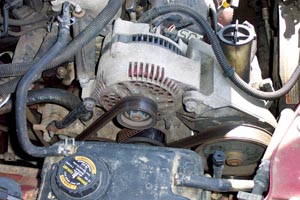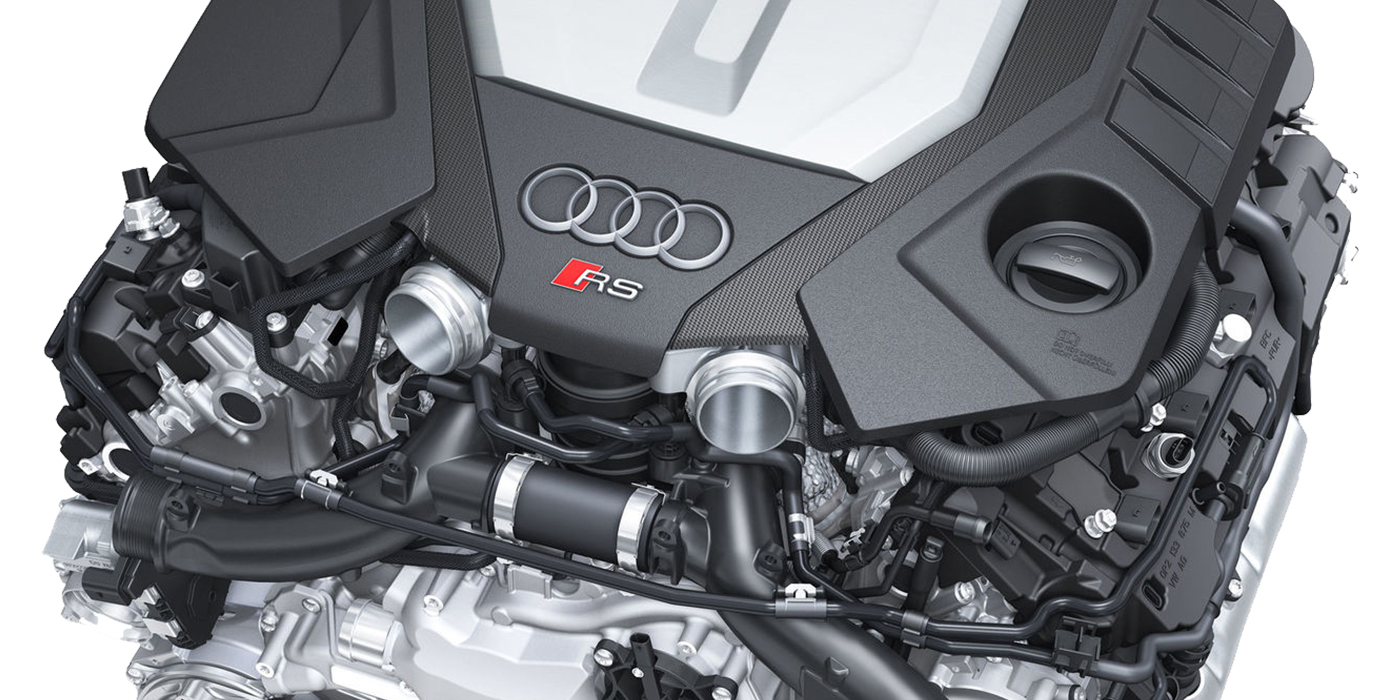By Gary Goms
Contributing Writer
In current SAE J1930 terminology, the “alternator” is now being referred to as a “generator.” Of course, this isn’t news for technicians because many imports have always been equipped with “generators” for several years.
By either name, the alternator’s job has definitely become more complex during the past decade. Years ago, the typical import vehicle could live very happily with 40 amps of electrical current, which was enough to power the ignition, fuel and lighting systems.
Today, that threshold is rapidly advancing toward 100 amps of current which, among other things, must power innovations like heated seats, heated glass, sound systems, electronic power steering, air injection pumps, steering, braking and valve-train controls. On vehicles with aftermarket add-ons – lighting, subwoofers and amps, video displays – the drain is even greater.
 Even more critical, the advent of electronic automatic overdrive transmissions is keeping engine speeds well below 2,000 rpm at highway speeds. If the alternator can’t keep the battery fully charged during periods of high accessory use at low engine speeds, the battery will become partially discharged. When battery voltage drops below 9.6 volts during cranking, the result may be that the electric fuel pump and electronic fuel injection fails to supply enough fuel and the electronic ignition enough spark for a quick start.
Even more critical, the advent of electronic automatic overdrive transmissions is keeping engine speeds well below 2,000 rpm at highway speeds. If the alternator can’t keep the battery fully charged during periods of high accessory use at low engine speeds, the battery will become partially discharged. When battery voltage drops below 9.6 volts during cranking, the result may be that the electric fuel pump and electronic fuel injection fails to supply enough fuel and the electronic ignition enough spark for a quick start.
Precise voltage control is also critical because charging rates in excess of 17 volts may damage delicate electronics and on-board computer systems. More recently, at least one import manufacturer has reduced that threshold to as low as 16 volts.
So, in the strictest sense, the alternator has become the heart of the modern electrical system because it must maintain very precise voltage levels throughout the vehicle’s electrical system during a wide variety of driving conditions.
Chemistry of Charging
It’s important to understand the differences between the chemical and electro-mechanical aspects of the charging system.
The battery, which is the chemical storage component of the team, initiates the charging cycle by using chemical energy to crank the engine and supply field voltage to the alternator.
The alternator, which is the electro-mechanical component of the team, takes over by using engine torque to generate enough electrical current to keep the engine and vehicle accessories running properly, while at the same time replenishing the current drawn from the battery for starting. By working together, the battery and alternator maintain the system voltage at levels that allow the vehicle’s electronics systems to efficiently manage vehicle operations.
In order to keep the electrical system functioning at peak performance, the alternator must be able to generate different amounts of amperage at very specific voltage levels. Keeping in mind that the battery is a chemical device, alternator voltage regulators are designed to increase charging voltage (Example: 14.7 volts) at sub-freezing temperatures when the chemical activity in the battery is low.
At ambient temperatures above 70°F, the voltage regulator reduces charging voltage (Example: 13.7 volts) to prevent the battery from evaporating the electrolyte. At temperatures of about 70°F, the charging voltage generally should be about 14.2 volts, which is enough to maintain a full charge without evaporating electrolyte.
With that said, OEMs publish battery and alternator specifications that fit specific vehicle platforms. Factors that may affect charging voltage specifications are the chemical characteristics of the OE-spec battery, the voltage drop occurring over the length of the cable connecting the alternator and the battery, and the physical location of the battery within the vehicle platform itself. A battery mounted in the rear of a vehicle, for example, may require a slightly higher charging voltage than one mounted in the engine compartment.
Operating Principles
In the most basic terms, the alternator consists of a rotating magnetic field (the rotor) turning inside a stationary winding (the stator). The magnetic lines of force generated by the rotor are “cut” by the stator, which produces AC or alternating current that changes direction of flow through the stator windings as the stator is exposed to various phases of the rotor’s magnetic field.
Since a lead-acid storage battery operates only on direct current, the alternating current produced by the stator is rectified into DC or direct current by using three positive and three negative diodes attached to the stator windings. Because a diode allows current to flow in only one direction, the diodes rectify the AC into DC by “clipping” the undesired positive or negative current flows.
The result is that AC flowing in either direction is changed into DC flowing in one direction.
The current flow from the alternator is controlled by a voltage regulator. The regulator is connected to the rotor via carbon brushes that seat on copper slip rings mounted on the rotor shaft. The regulator controls the degree of magnetization in the rotor by regulating the amount of current flowing into the rotor.
In order to control alternator output, the voltage regulator must accurately sense the battery voltage level (B+). When the regulator senses a low B+ level, it increases the field current flow through the rotor assembly. When the desired voltage level is reached, the regulator reduces the field current flow through the rotor.
Voltage regulators can be mounted remotely on the vehicle firewall or fender, or mounted internally in the engine management computer or the alternator itself. Obviously, the remotely mounted voltage regulators are less able to accurately sense B+ voltage because of the inevitable effects of corrosion and potential wiring defects.
Internally mounted regulators, on the other hand, are protected by the computer or alternator housing, making them much less vulnerable to either corrosion or wiring defects.
Diagnostic Guidelines
Most alternator failures are indicated by a red warning light on the instrument panel, by dim headlamps or by hard starting caused by a partially discharged battery. When testing alternator output, it’s important to perform any test with the alternator and the battery warmed to room temperature of at least 70 degrees F.
Because alternator systems may vary in design and application, it’s very important to have the manufacturers’ specifications and procedures at hand before proceeding with a definitive diagnosis. Many Honda alternators, for example, are based on a load-sensing system that may require the headlamps to be turned on before the alternator begins to charge.
When testing alternator output, remember that the most accurate procedure is to place the tester’s inductive amp probe on the B+ wire as close to the alternator as possible. If the probe is placed at or near the battery, the specified charging rate will be minus about 15 amps (refer to specifications) of current required to power the fuel pump, ignition system and alternator field.
Testing the condition of the battery is the most important step in diagnosing any alternator problem. Keep in mind that the alternator charges against internal resistance that’s present in any good battery. A battery with a shorted cell will offer less resistance and therefore cause the alternator to charge at an unusually high amperage rate. On the other hand, a battery with badly sulfated plates will offer too much resistance and will cause the alternator to charge at an abnormally low amperage rate.
If the alternator isn’t charging or field current isn’t present at the alternator’s field connector, always begin a diagnosis by testing the alternator fuse located in the underhood or instrument panel fuse box. If B+ voltage isn’t available at the alternator B+ terminal, test the continuity of the fusible links located near the starter or battery.
If the charging rate is low, inspect belts for slippage caused by belt or pulley wear, oil contamination, a defective tensioning device or a loose belt adjustment. Remember also that low charging voltage can be caused by a shorted or open-circuit diode. A bad diode is indicated by excessive “ripple” on a charging system analyzer or 250 millivolts or more of AC electricity present at the alternator B+ terminal.
If the charging rate is intermittently absent, suspect worn or sticking alternator brushes, broken field wires or loose field connectors. While an intermittent overcharge condition is extremely rare, its presence is indicated by premature headlamp failure and excessive gassing at the battery vent.
In most cases, an overcharge condition is caused by a defective voltage regulator or an intermittent open B+ reference voltage circuit. In all cases, follow the import manufacturer’s wiring diagrams and recommended troubleshooting procedures in order to ensure accurate, trouble-free alternator diagnosis.
New and Remanufactured
Because modern alternators are very compact designs that generate very high wattage, selecting a quality replacement unit is more important than ever. By choosing either a new or quality remanufactured alternator, your shop can meet a price-point or performance need, while at the same time guaranteeing maximum reliability and performance.
When selecting a remanufactured unit, for example, consider the number of new parts installed and the number of quality checks the alternator must pass before it’s boxed and sent to your local parts jobber. Also keep in mind that the remanufactured unit must meet OE charging rates as well as achieve an OE fit when mounted on the engine.
When considering a new alternator, remember that many import enthusiasts are now equipping their vehicles with sound systems and other accessories that may demand more wattage than the original equipment alternator can supply. Consequently, installing a new, high-output alternator may be the desired option because the new alternator can be designed from the ground up to meet a wide range of import tuner performance needs.













